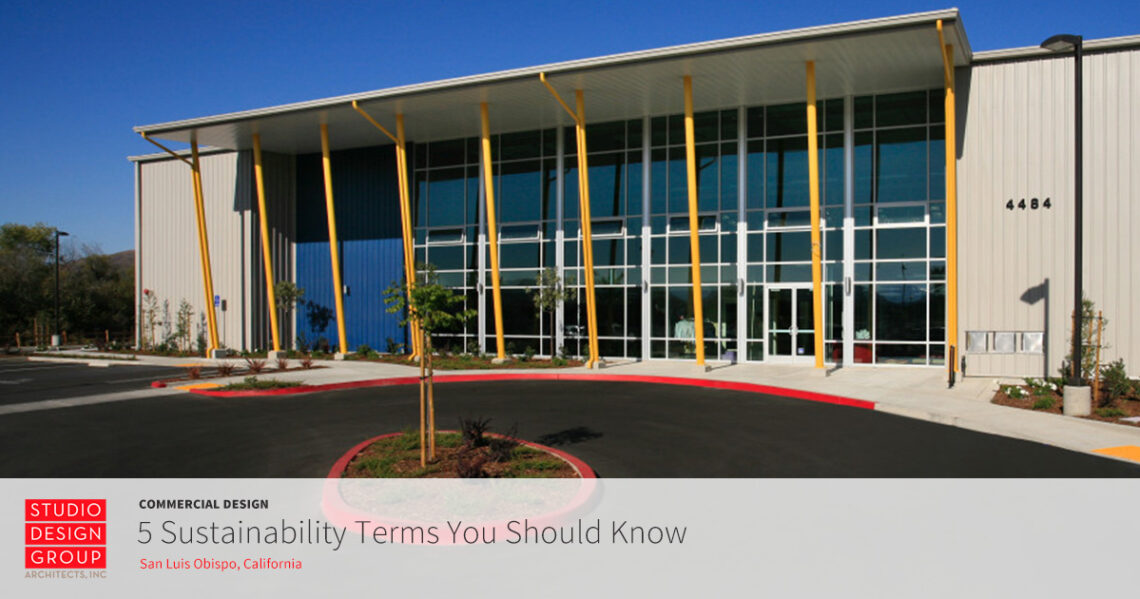
It’s hard to have a conversation with an architect or builder without the topic of green or sustainable building or coming up. People around the world are interested in reducing their impact on the planet, using fewer resources and generating less waste when creating built environments.
Sustainable design has been a hot topic for a while, but many laypeople aren’t quite sure about some of the terminology. If you’re still figuring it out, this cheat sheet from your San Luis Obispo architects might come in handy.
Green Building Certification Programs
There are several programs that allow projects to be evaluated by third party organizations who will certify the building or some of its components as “green.” Here are some common certification programs in the United States, along with links for more information:
• The LEED (Leadership in Energy and Environmental Design) program, now offering several levels of certification, was formed after the establishment of the U.S. Green Building Council in 1993. It has grown to be used worldwide.
• Passive House Institute US offers the largest Passive Building Certification (PHIUS+) in North America.
•A partnership between the Environmental Protection Agency (EPA) and Department of Energy (DOE) also offers the Energy Star for Buildings and Energy Star for Home programs.
Carbon Footprint
The amount of greenhouse gas emissions produced by a building’s operation or activities is known as its carbon footprint. Greenhouse gases are implicated in global climate change. Scientists and architects throughout the world are working to slow climate change and its associated hazards, such as rising sea levels, flooding, drought, and infectious disease spread. Reducing a building’s carbon footprint also makes it run more efficiently and offers a more hospitable environment for occupants.
Life-Cycle Assessment
Life-cycle assessment examines all the environmental effects related to the creation and use of a product or building. This includes the harvesting and processing of raw materials, manufacturing, transportation, use, maintenance and eventual recycling or disposal of the finished product.
Embodied Energy
The sum of all energy required to produce a building is known as its embodied energy. This does not include the operation and disposal of the building’s materials, but does include their production, manufacturing and transportation. Durable, adaptable buildings made with efficient, locally sourced or recycled materials and low-waste manufacturing processes have lower overall environmental impacts.
Gray Water
Gray water (known outside the United States as greywater) is water that has been used but doesn’t contain human waste or hazardous materials. Water from sinks, washing machines, dishwashers, tubs and showers is considered gray water. Gray water is suitable for reuse without extensive processing. Gray water is often used for irrigation of ornamental landscaping. These systems are generally quite simple. They do require some site analysis to prevent contamination of waterways, and the use of products that are suitable for use on the site’s plants and soil. Some buildings also use gray water systems to flush toilets, getting one additional use from the water before it enters the septic or municipal wastewater system.
Green building practices and sustainable management of construction and demolition materials can greatly reduce resource use, greenhouse gases, and municipal solid waste. Our LEED certified architects at Studio Design Group Architects, LLC in San Luis Obispo are dedicated to designing sustainable buildings that minimize environmental impact while maximizing beauty, comfort, and long-lasting functionality. Give us a call at (805) 541-3848 or reach out online to let us know how we can contribute to your next project.
